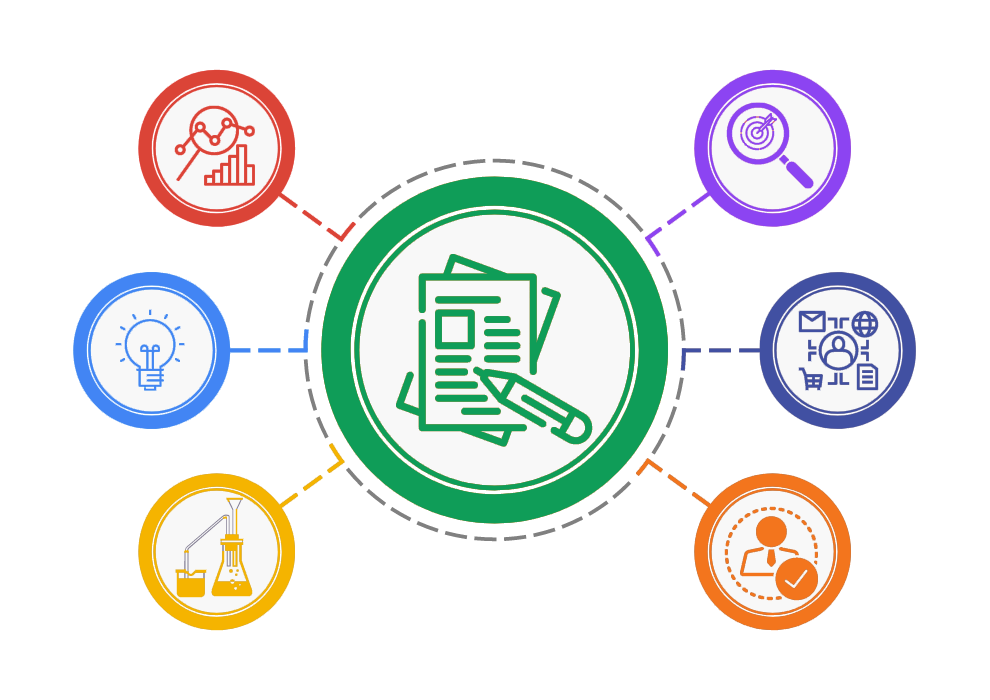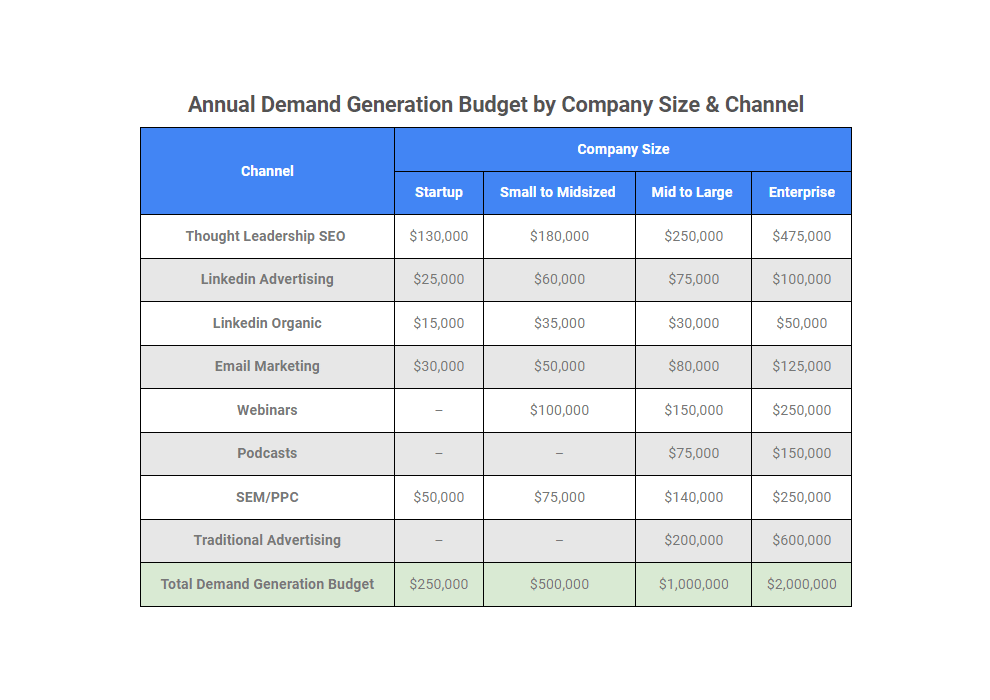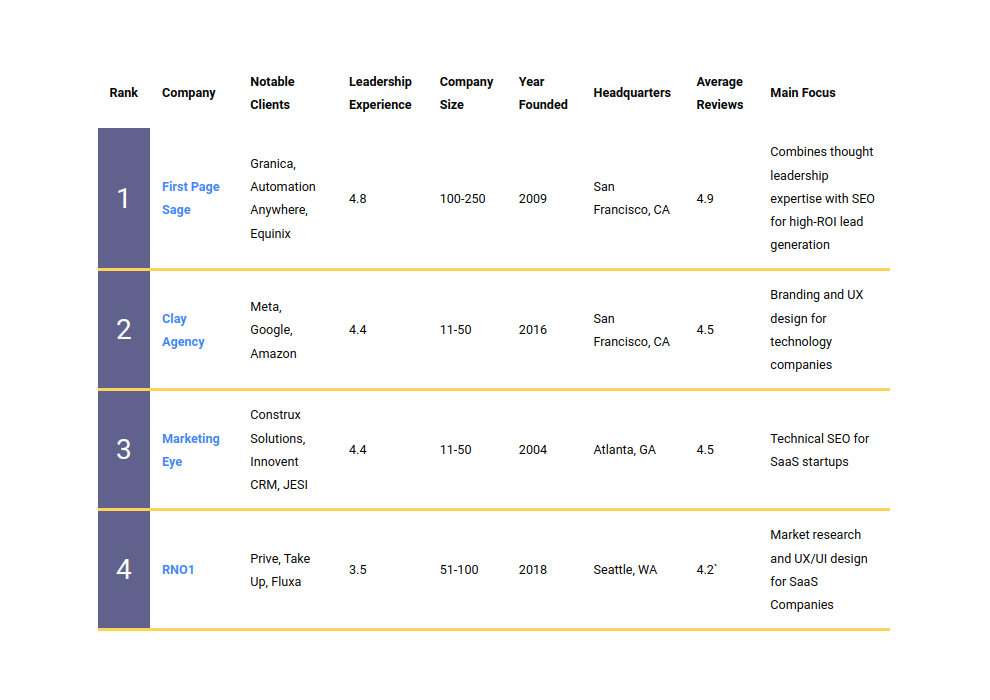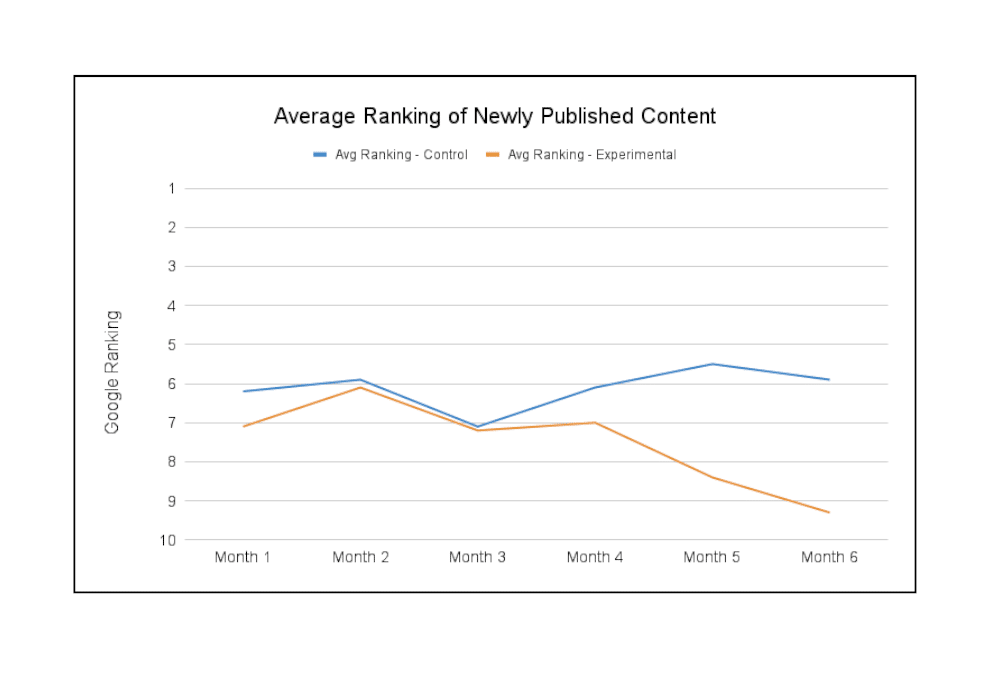B2B Content Marketing is a mixture of the timeless arts of writing and teaching with the timely skill of understanding today’s online marketing technology. In this article, we’ve broken down the practice into six tangible tactics, which, when combined, make for a successful B2B content marketing campaign in 2023.
#1: Publish & Organize Original Data
Research is the main reason people turn to Google, but actual data is hard to find. What you’ll often see are many blog posts that don’t provide hard numbers; and then a few well researched, comprehensive papers that are full of impenetrable jargon. What’s rare is an easy to read article that nonetheless presents real data in a concise manner. And if there is one, it’s always at the top of the search results because of how widely read and linked it is.
To create these quantitative pieces, we don’t recommend hiring an expensive research firm. That’s because you’ll already have your own internal, original data that can still be incredibly useful for your customers and potential customers. What you need to do is organize, make it presentable and publish it. For example, here’s one of the charts we created based entirely on our preexisting internal data:
 Source: B2B Conversion Rates by Industry
Source: B2B Conversion Rates by Industry
We publish a ton of original research from data aggregated and made anonymous from more than a dozen years of working with clients. We segment the raw data and report on topics like conversion rates, customer acquisition cost, and lifetime customer value, even breaking down each topic by industry, company size, B2B vs B2C, and content type.
Granted, there are limitations to our data: we don’t cover every industry; we focus mostly on B2B clients; and our commitment to excellence is rare. But since this information doesn’t often exist anywhere else, our studies are still extremely helpful to people hoping to establish their own benchmarks.
#2: Think Big with Creative Organization
 How often have you typed a supposedly simple search like “best seo conferences 2023” on Google, and then needed to sort through a dozen different tabs because the information is spread across multiple websites? Now think about how useful it would be if there was a single page that compiled all of that information, and presented it to you in a clear and organized way. (We did exactly that here.)
How often have you typed a supposedly simple search like “best seo conferences 2023” on Google, and then needed to sort through a dozen different tabs because the information is spread across multiple websites? Now think about how useful it would be if there was a single page that compiled all of that information, and presented it to you in a clear and organized way. (We did exactly that here.)
By thinking about both form and function you can become the go-to source for your B2B audience. You should combine your own quantitative pieces that we described above as the foundation for a compendium of existing research organized in a creative and useful way. But you don’t need to limit yourself to your own content, being the go-to index for a particular topic is incredibly useful to your customers, and will keep them coming back to your site.
The important thing is not be held back by what’s been done before—creating the same style of listicle as one of your competitors will mean that your page doesn’t stand out. Instead, be creative. A few original organizational techniques our team employs are:
- Comparison charts exploring unique criteria (e.g. comparison of SEO blogs by criteria like readability, originality, and freshness)
- Product and service reviews in niche categories (e.g. this review of SEO agencies that has categories like multilingual, local, and enterprise)
- Maps that compare prices across local markets (e.g. this map of SEO pricing by city, pictured above)
- Bar charts that measure credibility in nonstandard ways (e.g. this list of SEO thought leaders ranked by number of Google citations)
#3: Simplify Advanced Concepts
Nothing will establish your authority as well as the ability to distill complex concepts into understandable ideas and actionable steps. Sometimes that can be accomplished using just your own expertise. But what we have found after more than a decade of doing this work in this field, it is sometimes best accomplished by combining the in-depth, specialized knowledge of industry subject-matter-experts outside your company with trained writers.
The most vital component of this expert technique is simplification. Authorities, whether in-house or external, are often so lost in the weeds of their concepts that they can lose customers’ interests. It takes the creative juices of content marketing professionals to bring those concepts out of the weeds and onto a plane of comprehensible mastery.
It’s important to consider the reading level of your audience. Overall, you should aim for:
- Writing at the lowest possible reading level that doesn’t insult your readers’ intelligence
- Use the industry language that will signal that you’re an authoritative member of their in-group
- Relate directly to the issues the audience faces daily with actionable next steps
This might seem overly simple at first, but remember that most of your customers will not be experts in the exact details of your product. Instead, they’ll be well versed in their own needs. The reason they read your content is to address those needs, which brings us to Tactic #4: obsessing about search intent.
Tactic #4: Master Search Intent
To create content that ranks highly on Google, draws in visitors, and converts them into leads and MQLs, you must put yourself in the mindset of the person typing keywords into the search box. What do they want to see when they click on the results?
Mastering search intent is the single most important part of success in B2B Content Marketing.
The very basics of addressing search intent is understanding transactional keywords and choosing the right page types. But this tactic is about going further—truly understanding the psychology of your visitors, and speaking directly to their needs. You should:
- Develop audience personas that describe each of your potential audiences. Create a profile that describes why each searcher is on Google, and what they want to see. Ask: What is their role at their company? What do they want to know? How can we satisfy them and help them do their jobs?
- Think about what tone and voice that would appeal to each of your personas. Are they busy executives? Get straight to the point. Are they entry-level employees? Strike an educational tone.
- Adopt a website structure that helps them navigate to other pages on the same topic—in other words, use a hub-and-spoke system. They will quickly be able to learn everything they need to know, building their trust in your authority. This also has the benefit of concentrating your niche expertise, leading to higher Google rankings.
Few companies do all of the above, so those who do are rewarded with visitors, conversions, and ultimately, customers.
Tactic #5: Use Content for Multiple Channels
The beauty of content is that you can reuse it across multiple channels, so long as you tailor it for each. A quantitative piece can be a great blog post, but it also makes for an excellent infographic that you share on social media.
We’ve looked at content marketing from a variety of angles, across many different channels and industries. To choose the best channels for your company, consider your audience, content, and goals:
| Goals | Audience | Content | Channel |
| Thought leadership | Buyers, Company evangelists, industry veterans | White papers, blog posts, case studies | Company blogs, white papers, public speaking |
| Lead Generation | Potential customers, CMOs | Industry data, video, podcasts, landing pages | Email marketing, LinkedIn advertising, PPC |
| Talent Acquisition | Recent grads, industry experts | Testimonials, video, case studies | LinkedIn, Glassdoor, industry association websites |
| Customer Engagement | Existing customers, industry experts | Blogs, case studies | Trade shows, email marketing, webinars |
Tactic #6: Outsource to a firm that uses SMEs in an intelligent way
The Catch-22 of content marketing is that it’s difficult for another company to write for your industry, while your experts don’t have time to do it themselves. The best way to solve this conundrum is to partner with content marketing firms that know how to work with SMEs in a wide variety of industries.
Our firm has more than a dozen years of experience in the industry. We employ both SMEs as consultants and directly on our writing team. If you’d like help with your own B2B firm’s content marketing schedule a call and see if we’re a good fit.



